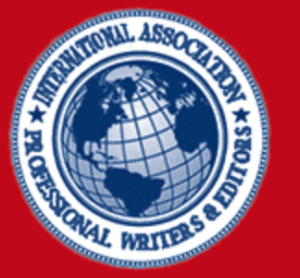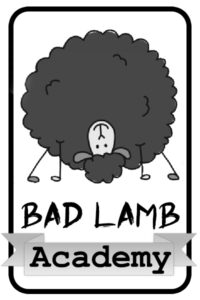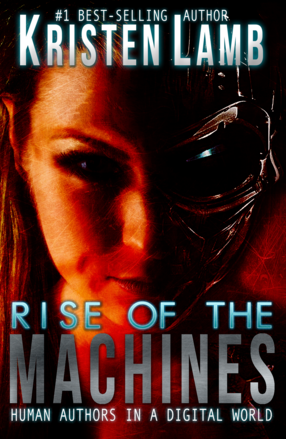I’ve run critique groups for almost eight years. I also have edited literally hundreds of manuscripts, and one thing that most new writers do not accurately understand is the antagonist.
I have to admit that I didn’t understand the antag the way I needed to until a few years ago, and this pivot-point in my education would not have happened without the fabulous Bob Mayer. Not only is he a NY Times and USA Today Best-Selling mega-author, but he is a great writing teacher as well. A couple years ago, Bob actually taught me a technique that changed everything about the way I wrote. Bob advised that I start thinking of the antagonist FIRST. Initially, I was resistant. I mean, I wanted to construct my heroine. She was far more fun. But, as I would soon learn…that was backwards thinking.
Construct your antagonist first. Trust me. You will thank me (and Bob ) later.
As I have said in previous posts, there is no story without the antagonist. Period. The story IS the antagonist’s agenda. No Buffalo Bill, no Silence of the Lambs. No Darth Vader, and Skywalker doesn’t have a Death Star to destroy. If Joker was a choir boy, Batman’s life would have no meaning.
Antagonists are the Alpha AND the Omega—the beginning AND the end.
Once we understand the antagonist, narrative structure falls into place with far less effort. The antagonist is responsible for the inciting incident (beginning) and the Big Boss Battle (the end).
When we know our antagonist, it is easier to find a beginning point.
Too many authors have awkward prologues that serve no real purpose. They are just stuck on the front because the new writer wants to “hook” the reader because she intends on spending 50 pages to get going (normally with a lot of back story about the protag’s childhood). Hey, I made the same mistakes when I was new, too. We are here to learn ;).
So there is this awkward prologue slapped on the front to hook the reader. Yeah, um no. Prologues are bad juju. Read why here.
Back to antagonists and structure…
When we understand what the antagonist WANTS, then it is easier to pinpoint where and how his life intersects with our protagonist—also known as the inciting incident.
Normal World—Shows us the protag’s life as it would have remained had the antag never come along to disrupt the protagonist’s life. Normal World grounds us and gives us a chance to become vested in the protag. We need to connect if we are going to spend the next 80-100,000 words caring for this character. Normal World hints that all is not well. It doesn’t hang us over a cliff or a tank of sharks or have us in a hospital weeping over a lost loved one. That is melodrama.
Inciting Incident—Is that event that offers the possibility of change. The protagonist still has to MAKE a choice before we make it to the first major plot point. The inciting incident is that point where the agenda of the antagonist intersects the life of the protagonist.
Normal World–>Inciting Incident–> (Choice) Turning Point into Act One
In screenplays there are three acts, always. In novels, there are four acts. Normal World, Act 1, Act 2, and Act 3.Screenplays generally condense that Normal World so much that it is just part of Act One. In novels, we need time to be vested in the character. Hooking the reader is less about fast action or heart wrenching melodrama and more about presenting a character we like, and who we care about. We connect and we sense trouble, so we worry, and that’s why we stick around.
When we understand the antagonist and his agenda, it is far easier to write great endings.
In Star Wars, we knew Darth’s plan involved the Death Star. Thus, the ending logically would involve the Death Star getting all blowed up, right? In Romancing the Stone, the bad guys kidnapped Joan Wilder’s sister in order to get the jewel. Thus, even if we had never seen the movie, it would be easy to extrapolate that the ending likely involves rescuing a sister and making sure bad guys go to jail and don’t end up with the jewel.
Our beginnings will change a dozen times or more before we make it to the final draft. If you are beginning a book, my advice is that you write out your antagonist’s history. What does he want? Why does he want it? How does he plan on getting what he wants?
Also, remember that the antagonist, in his mind, is not the bad guy. This will help give your antagonist dimension. Antagonists are not always villains. Villains are merely ONE FLAVOR of antagonist.
Remember that the antagonist is the hero in his own story.
Great villains do not believe they are the bad guy. Hannibal Lecter felt he was doing society a service by eating the less desirable members of the species. It is his warped justification for his actions that makes him even more fascinating.
Antagonists are not always wrong; their goals just conflict with the protagonist and disrupt her life and force change.
For instance, the antagonist in Steele Magnolias is the daughter, Shelby. What is her agenda? Have a baby despite having severe, life-threatening diabetes. That is a noble goal that isn’t necessarily wrong. Why does this make Shelby the antagonist? Because, if Shelby had been happy to adopt, then M’Lynn’s (mom-protagonist) life would have remained the same. When we understand Shelby’s plan—have a baby despite life-threatening diabetes—then plotting becomes far easier. At the end, there must be a baby. Whether that baby lives or dies is up to the creator.
Your protagonist will be reacting to the antagonist’s agenda for roughly 75% of your story. It is only in the final act that your protagonist will transition into a hero and will start gaining ground.This is why, when we begin a novel, it makes sense to figure out out ending first. Then, plotting becomes MUCH easier in that we know how and where the story ends. Then plotting is just a matter of getting the protag from point A to point Z.
Some outstanding references to help you guys:
Larry Brooks’ Story Engineering.
James Scott Bell’s Plot and Structure.
Blake Snyder’s Save the Cat.
Bob Mayer’s Novel Writer’s Toolkit
What are some of your favorite movie endings? Some really well-layered antagonists that had you on the edge of your seat? I vote for Law Abiding Citizen. I had a hard time rooting for the protag, and found myself hoping the “bad guy” would win. It was very surreal, but proof-positive that this was a BRILLIANT antagonist that made for a spectacular ending…because his PLAN was just that darn great.
What about you guys? I love hearing your opinions and thoughts.
And to prove it and show my love, for the month of December, everyone who leaves a comment I will put your name in a hat. If you comment and link back to my blog on your blog, you get your name in the hat twice. If you leave a comment, and link back to my blog, and mention my book We Are Not Alone in your blog…you get your name in the hat THREE times. What do you win? The unvarnished truth from yours truly.
I will pick a winner every week for a critique of your first five pages. At the end of December I will pick a winner for the grand prize. A free critique from me on the first 15 pages of your novel. Good luck!
Winner’s Circle
Winner of 5 Page Critique is Joseph Kurtenbach. Please send your 1250 word Word document to my assistant Gigi. gigi dot salem dot ea at g mail dot com.
Winner of 15 Page Critique is Jennifer Jensen. Please send your 3750 word Word document to my assistant as well.
I also hope you pick up copies of my best-selling books We Are Not Alone–The Writer’s Guide to Social Media and Are You There, Blog? It’s Me, Writer . Both books are ON SALE for $4.99!!!! And both are recommended by the hottest agents and biggest authors in th biz. My methods teach you how to make building your author platform FUN. Build a platform and still have time left to write great books!








53 comments
8 pings
Skip to comment form
You know I drank this Kool Aid. I think it was cherry. And it really does make everything fall into place. And one day, all those lovely little darlin’s will make lovely blog entries. Thank you (and Bob) for handingbme the cup and putting me on the path to …wow, this sounds like you are Jim Jones or something.
Metaphor fail. 😉
AWESOME POST!
I have continued reading stories where I didn’t care about the main characters simply because I loved the antagonist so much! Whether their morals are in the grey area or they are just evil incarnate they are the driving force of the story.
THIS is why my first drafts suck. Usually, I write from the protag, then go back and revise working from the antagonist. Maybe first drafts should have more antag…
Thank you!
Author
But the antagonist is the entire reason for the story. No antagonist and no core story problem in need of resolution. I hope this helps you :D.
This sounds like a terrible idea, which probably means it’s right. Dag nab it.
I think having a clear understanding of the antagonist makes writing conflict easier through the whole story. Another great post.
As ever, an interesting thought-provoking blog that makes me seriously rethink what I’ve done to ensure I’m ticking the right boxes. And OF COURSE the antagonist is at the heart of the story…
My dark side has a lot more fun with the bad guys. I’ve met so many of them in real life (married a couple of them), they are easier for me to write. I’ve read a lot of books where the bad guy is not bad enough, bland, boring. Great post!
A-ha! So THAT’s why my first novel fell completely flat and is now hiding under the bookshelf waiting to be rescued! Thank you for the great advise, Kristen! As always, you’ve helped more than one writer more than we can express! 😀
This is all great advice. I have horrible tendency to write the antagonist better than the hero. Villains are just too much fun and have a real ability for complexity. Often, too, the hero is reacting to the villain rather than the other way around. It’s a difficult balance.
39,000 words into NaNoWriMo before I did this…my zero/first draft would have been so much better if I had done this first….
This is a great post!! I need it NOW! Thanks for this and all your super-helpful info!! I will be digging out Bob’s books, too. (Thanks for this photo, too. I snatched it. Too good to pass up. Love this guy!!)
Thanks for this post, Kristin! I’ve been thinking a LOT about my bad guy, and how to give him more of a presence in my story. The thing is, his identity is kept a secret until the end (sort of like a who dunnit, I guess, though mine is a paranormal suspense) so it’s difficult to build in enough character. Any tips on this?
Hmm, I never thought about starting from the antagonist. But hey, if it works . . .
I’ll have to give it a try when it comes time to plot my next novel. Thanks for the great tips.
I don’t believe I’ve never heard this advice before, and you make a heck of a good case for it. It comes a little too late for this WIP (fortunately, I’m pretty happy with my antagonist and his motivations). I’m not positive how well this would mesh with my creative process so far, because the first thing that tends to pop into my head is the protagonist and the premise . . . like, “a kid who can turn invisible–what kind of trouble can he get into?” Not a well-fleshed out protagonist, but some kind of basic handle. Still, next time I’m developing a story idea I’ll try to approach it this way and see how it works for me!
Just found your blog. Am finding your info both interesting and helpful….plenty to think about. Thanks for sharing.
This is sooooo important. I’ve run across so many pieces with cardboard villains in my editing career. I tell authors to think of themselves as actors playing the villain and ask “what’s my motivation?!” So true “Remember that the antagonist is the hero in his own story.”
I am finding it strange that we all make the same mistakes in the beginning. What is up with that?
And how unlike me to do things half-a$$ backwards. lol
But it wasn’t until the second pass / re-write that the role of the antagonist came to light. It made it a whole lot easier.
Thanks Kristen for breaking it down. 🙂
Die Hard. Hans Gruber was the best bad guy. I just loved him. Of course, I end up loving the antagonist in lots of stories. They are most often the most interesting characters with the most layers and they are usually mysterious or know things that no one else knows.
In the story I’m writing now, my antagonist is a sarcastic, pointed-toothed, grey-skinned monster and I am totally in love with him. He is the funnest character to write.
So, I guess what I’m saying is that this advice rings totally true with me!
In Steele Magnolias, is Shelby the BBT or is it Death/Sickness where Shelby is the incarnate? Can you think of other movies such as this? I am writing a story with a similar idea.
Author
The BBT is Diabetes/Death represented in the proxy Shelby. Death is defeated in that Shelby dies, but there is resurrection in the grandson. She lives on through the little boy she leaves behind.
I also loved Law Abiding Citizen, but found myself rooting for the villain! Strange, but fun. Thanks for the great information.
It works. Really. 🙂 Thanks for a great blog, Kristen, and thanks for cluing me in to the importance of the antag.
I’m an antagonist person all the way. They always seem to be the most interesting characters in a good story. I spent a lot of time developing the back story and reasoning and train of thought for my antagonist. I love him in a sick, sadistic, kind of beautiful way. Therefore, I love this blog post.
All interesting comments so far and a very valuable post. In my new novel, the antagonist happens to be a seemingly unresolvable situation but then the situation changes and there is resolution. I will definitely post your site to mine. Thanks for all the fantastic links to good writing. http://www.sue-mcghee@blogspot.com
I love the idea of an antagonist as the good guy in HIS version of the story. Of course! (What pops to my mind is one of my favorites: the re-telling of the Three Little Pigs from the Big Bad Wolf’s viewpoint.)
As far as movie endings. . . The Quiet Man. When Sean (John Wayne) finally gets the dowry money and walks to the furnace and then Mary Kate (Maureen O’Hara) flings open the door all is right with the world.
This solves everything. Everything. It improved my plot and characters ten-fold when I learned it.
This makes sense to me. Fortunately, I’m at the very early stages of plotting a novel. I’ll leave the protagonist for a bit and work on the big baddy. Should be fun.
Kristen (and Bob), thank you for sharing this. I haven’t started a novel with the antagonist yet, but I always followed: “Remember that the antagonist is the hero in his own story.” This little advice makes everything fall into place, and stories so much richer.
I always get so much out of your posts, but this one was huge. Totally changed my way of thinking through my stories! Thanks!
Great advice! I’m just starting and definitely need to spend more time with my antagonist.
Severus Snape is my favorite love-him/hate-him antagonist. He’s not the Big Baddy, but he’s nasty to our hero and his friends through most of the series. I’ve often wondered if Rowling put Snape in the books because Voldemort was just too inhuman and she knew readers wouldn’t relate to him.
So how do you treat the antagonist when the antagonist is your protagonist? I am working on a novel where the protag (who is mentally at his tipping point) has something terrible happen to him, which sets him off and he goes off on a calculated killing spree. (He’s sort of like the Law Abiding Citizen, who takes justice into his own hands after the bad thing happens to him, only there isn’t a cop after him.) When he accidentally kills a kid while killing his target, it sets him onto a battle with himself, trying to get his own anger and desire to kill all who might hurt him under control.
I thought about his would be girlfriend as the protag, since she is a homicide detective, and she is trying to figure out who is doing these things, except I don’t want her to be the focus of the story. HE is really the focus of the story, since it is what’s going on in his mind, not hers, that is ultimately what forms and decides the story. He uses her for information to help him stay away from getting caught.
Sooo…do you think that is wrong-headed? Is my lack of a clear antagonist other than my protag why I’m having trouble deciding on the end? I’ve worked out all my chapters in outline form and I keep changing the last, because I’m not satisfied with the conclusion.
What do you think?
Once more you have offered up exactly what I needed, exactly when I needed it. I have always focused too much on my protagonist because I love them. I must learn to kill my darlings, and build conflict.
I now have a direction for rewriting my NaNo novel as well as a new story idea that surfaced at 3 AM this morning.
My biggest problem now is which one to work on first …. and how to sleep when I’m so excited.
Wow – total “aha” moment! Love this. And it makes TOTAL sense. Thanks Kristen – and for making it so easy to follow and understand!
Very helpful post. Thanks, Kristen
Wow. I just got into this series of posts, and you post a new one! Thanks!
I agree and disagree with you on this one. The same argument could be said of the protagonist. Without them, the villain would have no one to antagonize. Who would have watched Star Wars to watch the Death Star swoop around the galaxy to destroy higgledy-piggledy? With no Resistance, no Luke to thwart his plans, Darth Vader would have been far less interesting. And Hannibal wouldn’t have been as fascinating without a Clarice to taunt.
As far as I’m concerned, all storytelling is about balance. Balancing character with plot, protagonist with antagonist, and showing with telling. A good story is born from showering attention upon each one. You can’t leave a single one wanting if you want a story of depth. Which, of course, we all do.
But I see why you would need to say this. The antagonist is the character most of us avoid detail in, because we hate or fear that side of human nature. So, attention must be brought to the importance of depth in his/her character.
I just don’t agree with the whole Alpha and Omega thing. A story requires an antagonist and protagonist equally, therefore one cannot be superimposed upon the other. If there isn’t a protagonist, there simply can’t be an antagonist. Because then they’d be, by definition, the protagonist and center of the story…
That reasoning just goes full circle. You can’t have a protagonist without an antagonist, because then you have no story (that anyone will want to read). You can’t have an antagonist without a protagonist, because the definition of antagonist is a character that antagonizes the protagonist…which you can’t do without there being one.
Now, outlining the antagonist before the protagonist is an interesting idea, however. I’ve already built my story and am in the process of writing it now, but I might have to try that sometime.
I don’t know if this is the way it is for everyone, but my protagonist and antagonist are usually created at the exact same time. I think up a problem for someone (an antagonist), and then outline who that someone is (a protagonist). They’ve always been a bit of a package deal in my mind.
Anywho, great article, and thanks so much for posting it! Have a great day, and happy writing!
Kristen,
Can you recommend a character worksheet for the protagonist? Is it different than the worksheet for the protagonist?
As usual, we learn a lot from your posts. I haven’t even once considered looking at the story from the antagonist point of view. Maybe that is why some of my stories lacked the depth of conflict I would like them to have. Thanks a million for this post – following this advise must improve anyone’s writing.
That sounds like excellent advice. My problem is that I have three antagonists, and the one that has the greatest potential for creating mayhem (the daughter of the protagonist) is the one with whom the resolution comes first. I’m wondering if the effect won’t be the same if the focus is scattered.
Hi Kristen. So I continue to tiptoe a little more towards the craft of fiction. I’m finally reading The Hunger Games, which is super good. Can’t put it down. I’m not even through book 1 yet, but the antagonists in that story are interesting since there are a few fellow combatants but a bunch of them are not really featured. I guess the Big Boss is Cato, but the entire system of governance at the Capitol represents something else. That book is plotted/written so well.
This is excellent advice. I inadvertently followed this process in the second novel in a series with great results. I am reviewing the first novel again to find possible areas of improvements using the “antagonist first” paradigm.
Thanks Kristen!
Great post. I think the biggest key that you mentioned is that the bad guy doesn’t think he’s the bad guy.
The antagonist issue gets murkier in my romance genre because often the hero and heroine are the antagonist of each other at the start of the book. If there is a true villain in the story, they don’t show up until later and then the hero and heroine have to deal with their own conflicts to work together against the bigger antagonist. So not sure if starting with the eventual antagonist would work for me during planning. I have to focus on that hero/heroine conflict first. So it can depend on genre for me on who to focus on first.
Excellent advice, I always started from the protagonist, but you’re right. The story doesn’t really start until the antagonist is put in play as the catalyst of the story. Even when the protagonist is also the antagonist, the story always revolves around the antagonist.
Wow, what an eye opener. This is one of the best writing tips I’ve ever heard, and as I was reading your post, it just became clearer and clearer how right on you are. Thank you, Kristen. And thank you, Bob, for passing this valuable tip on to Kristen.
I watched Law Abiding Citizen with my husband about a month ago. Completely blew my mind. I just wasn’t expecting it to unfold as it did! Another movie that keeps me on the edge of my seat the whole time every time I watch it (and it’s so good I have to watch it again every now and then) is Running Scared with Paul Walker. I guess there’s another movie with the same title starring Billy Crystal, but I haven’t seen that. The one with Paul Walker is super intense!
I cast another vote for Running Scared. When I recommend that movie I normally get querulous looks due to the Paul Walker factor. Good to know someone else isn’t afraid to admit it was a good movie!
Yay, Mark Landen! So good to hear of someone else who appreciates Running Scared as much as I do. It’s pretty edgy, but the plot is so full of twists, and following what happens to the gun all through the movie is somethin’ else, isn’t it? I could go on and on, I just love that movie so much!
This is one of the most helpful posts I have ever read. Talk about a light bulb moment. Thank you for all you do.
It’s true the best stories have really bad… well bad guys. The kind that make you wonder how could _anyone_ defeat him? That’s impossible! Thinking about this from the villain’s perspective is helpful because it’s normally the antagonist that is fully formed as a character, and gives your protagonist a bar to reach. If you think about it the other way around, you risk the question, “How should my MC…?” If you know who your bad guy is, that question is already answered; and more.
Good stuff!
You know the old Buddhist saw about how “when the student is ready, the teacher will come”. Well, I was on the cusp of reaching a whole new level of writing. I was ready and eager to begin, but didn’t know what to do next. You kicked my butt across the threshold
of a whole new way of working. Thanks! (I think.)
I love the way you put this, Kristen. It’s got me thinking of THINGS and switch things around.
I know when my stories drift or fall apart it’s usually because I have a weak antagonist or one without a clear goal. Or simply that I haven’t actually thought out who or what is the antagonist of the story.
I think now in terms of conflict. The more my antagonist’s aims conflict with that of the protag, the better the story. They are both the heroes of their own stories, just one ends in defeat and I do agree that without a strong antagonist there is no story.
You’re right – stories are often about the antagonist. I’d never really thought of it that way before. I have a tendency to concentrate more on creating my hero. The antagonist is often too much of an afterthought.
Thanks for the revelation.
Just so you know, I linked over to your blog yesterday. I recommended my (few) readers check out your posts on antagonists. Hope you don’t mind!
Have a great day, and happy writing!
[…] Lamb puts together another winner with her post on the importance of the antagonists. I hadn’t ever thought about it that way but it MAKES sense! I am just starting out and I am […]
[…] what a character’s relationship to their grandparents says about him/her. Kristin Lamb explains how to create the all-important antagonist (and recommends books about writing tools), while Ava Jae explores writing memorable minor […]
[…] Antagonists – The Alpha & The Omega of the Story by Kristen Lamb. Excellent, must read article for fiction writers. […]
[…] Tweet of the Day: Antagonist- The Alpha and the Omega of the Story […]
[…] and I believe her. If you want to read more about antagonists, I highly recommend zooming over to this link to read her article about the elusive […]
[…] “Antagonists – The Alpha and the Omega of the Story” by Kristen Lamb. I’ve never heard of writing advice that advised we create our antagonist […]
[…] “Antagonists – The Alpha and the Omega of the Story” by Kristen Lamb. I’ve never heard of writing advice that advised we create our antagonist […]
[…] I finally realized… I NEEDED TO WRITE ABOUT THE FACKING ANTAGONIST FIRST…! in a story. It’s no wonder I’ve been struggling… for a very long time […]